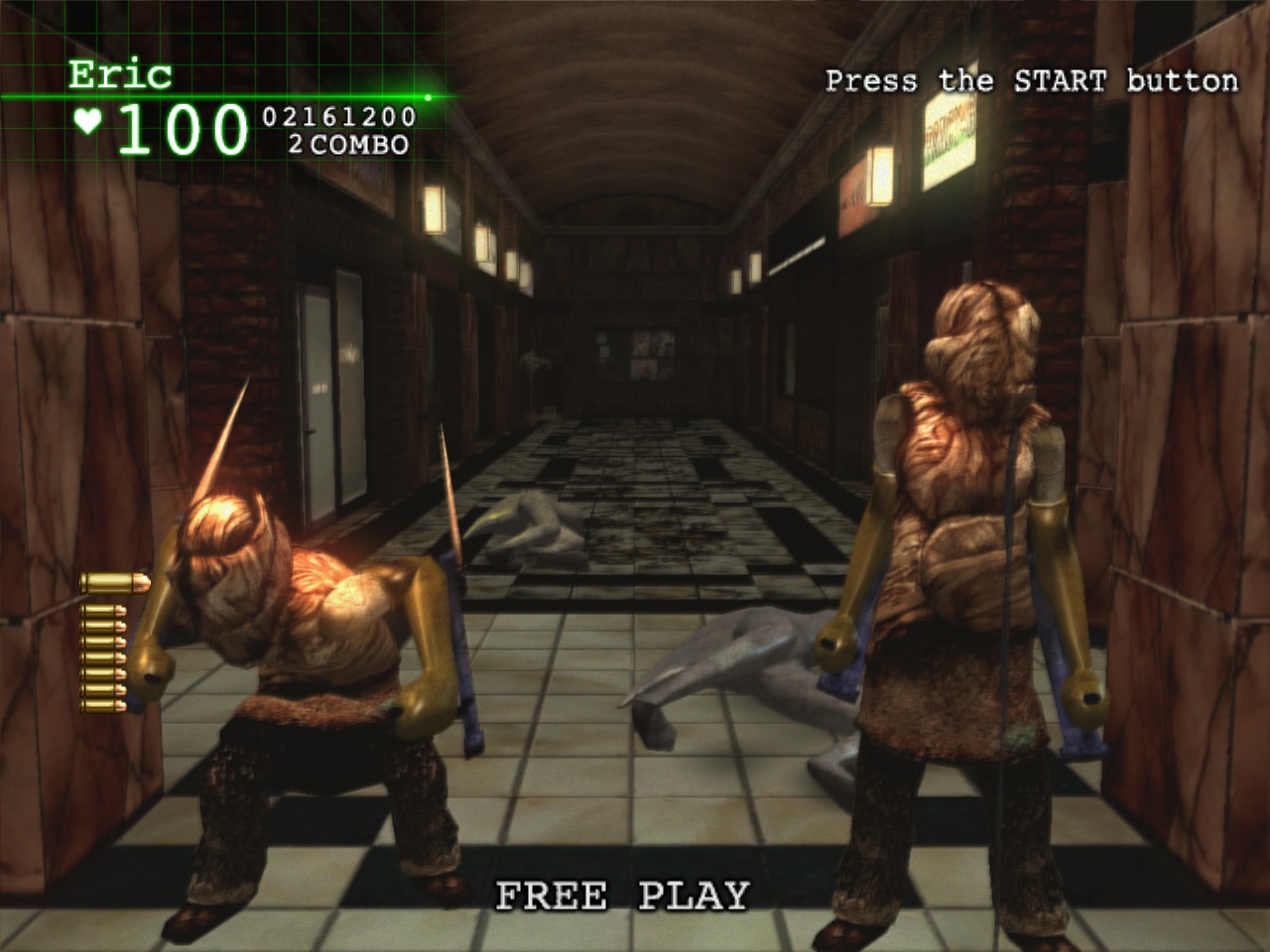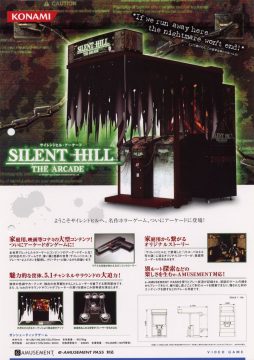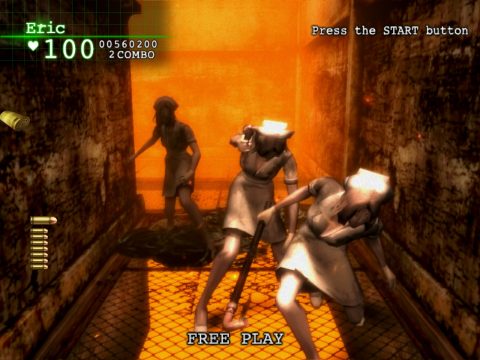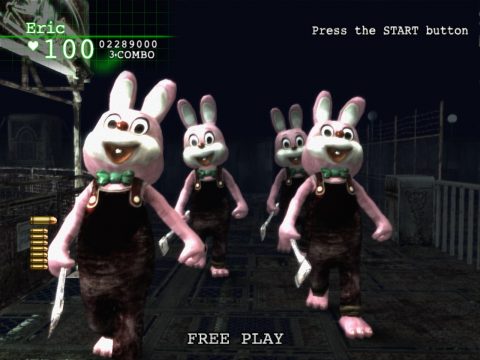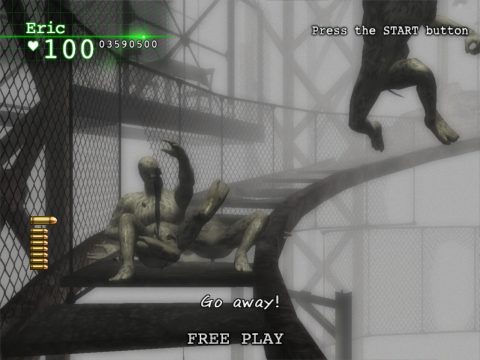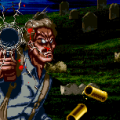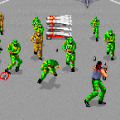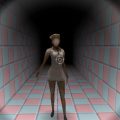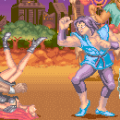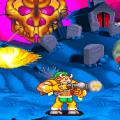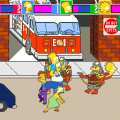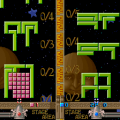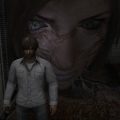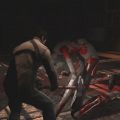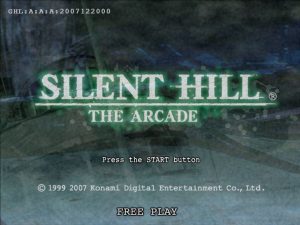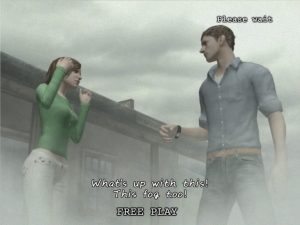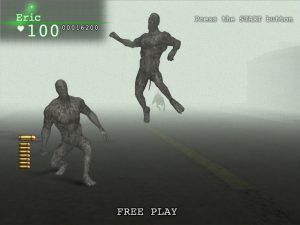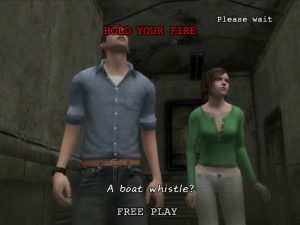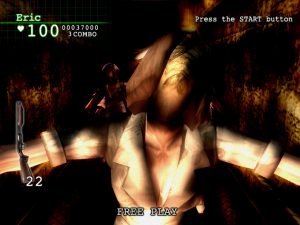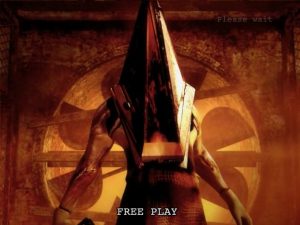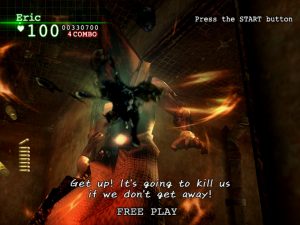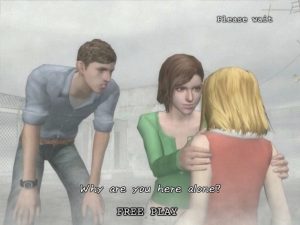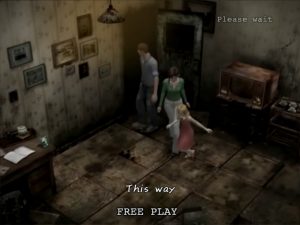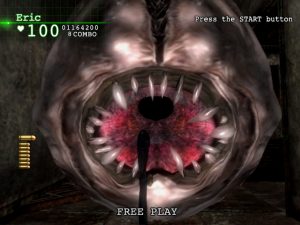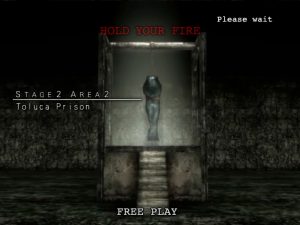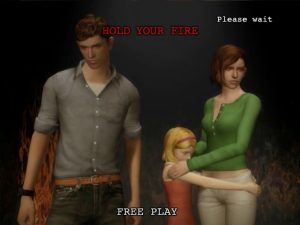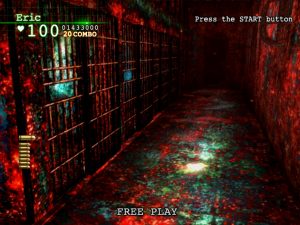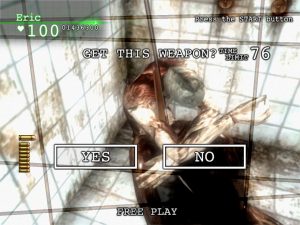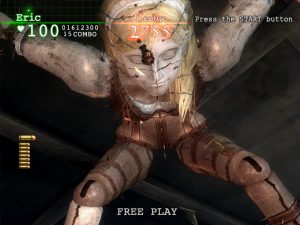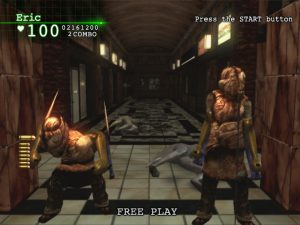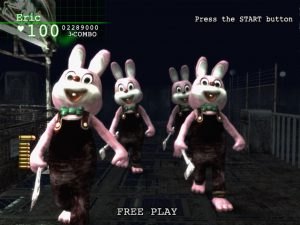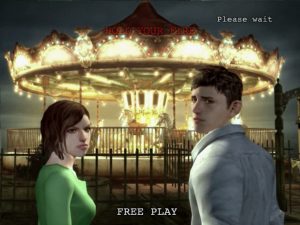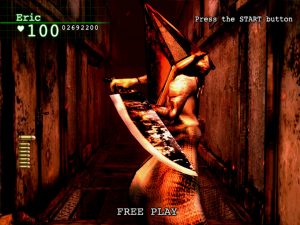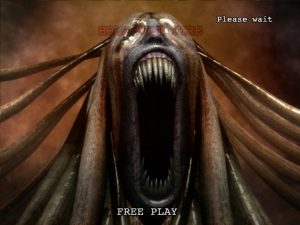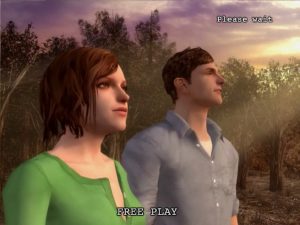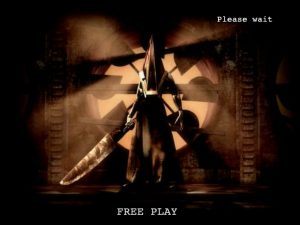Silent Hill was never a huge money maker for Konami. So throughout the series’ life, the publisher tried to push the series into profitability. Sometimes this took the form of mobile spinoffs, like The Escape or the Silent Hill Mobile trilogy, or much later, pachinko machines that reuse emotional moments from the series in wholly inappropriate, ludicrous ways. In 2007, this push manifested itself in an arcade light gun shooter, a seemingly bizarre choice for the traditionally spooky series. However, what could have been just a simple, low effort cash-in ended up being more memorable than it should’ve been.
An occult club from an unnamed university takes a field trip to the spooky town of Silent Hill and looks into rumors about corpses at the bottom of Toluca Lake. After some restless dreams, Eric and Tina wake up to find fog covers the town and one of their friends wounded outside their hotel, with the other members missing. So the pair grab some guns and start firing at endless strange monsters that have over run the town, to save their friends and survive the town. A little girl with a trouble past, Emilie, is a friend of Tina’s and often acts as a MacGuffin for the heroes, running off so they can chase after her. The story and the characters all connect back to a stray memo from Silent Hill 2, detailing the mysterious disappearance of The Little Baroness and its passengers in 1918.
Silent Hill: The Arcade doesn’t shake up any of the conventions of light gun games. One or two players move on a fixed rail through the environment, firing quickly and accurately to prevent enemies from inflicting damage. Shooting off screen reloads the gun. Running of out health means game over, with the health drinks and first aid kits around to replenish life. Occasionally, a shotgun or rifle pops up, albeit with limited ammo. Sometimes there are alternate paths, but these amount to small diversions that loop back to the main one. For those looking to chase score, gold and silver coins can be found for targeting far away or quick moving enemies, and there is a simple combo system, based on streak of continuous hits up to 20. The game features alternate endings, based on how many of the occult club pals are saved. There’s even a UFO ending, the reward for sniping sneakily hidden alien crafts peppered throughout the stages.
The star of the game is its environments. Namely, just how much they are copy and pasted from the three PS2 games. Seeing so many eerie and memorable settings and enemies repurposed for mindless violence is jarring. On the surface, it’s an obvious cost saving decision, but there’s something wild and silly about shooting your way through Brookhaven Hospital with Pyramid Head chasing behind, mowing down scores of axe-throwing, rifle-toting Robbie the Rabbits, or having a boss fight with a wooden doll lady with gangly limbs in the middle of the graveyard from Silent Hill 2. What relevance the stages and enemies have to the story breaks down when a little bit of thought is applied but it’s still enjoyable in a brain-off way. Locales include Jacks Inn, Brookhaven Hospital, Silent Hill Historical Society, and Toluca Prison (Silent Hill 2), Central Square Shopping Center and Lakeside Amusement Park (Silent Hill 3) and the Spiral Staircase (Silent Hill 4)
The game was released on PC-based arcade hardware and it hooked into Konami’s arcade network service, e-Amusement. This service syncs scores to an online leaderboard and saves game data, allowing players carry progress with them to different arcades and start from stages previously cleared. With the new hardware, developers took a chance to upgrade the PS2-era models and settings. It all looks clean, and the reused environments are given a new polish. The game reuses Akira Yamaoka’s compositions as well. The attract mode blares out “Theme of Laura,” and other familiar songs, like “Promise” and “Hometown,” show up for endings. The story is delivered with the same level of voice acting as other gun games of the era, which is to say, hammy and over-the-top. This is the first and only game where Robbie The Rabbit has a voice, emitting a goofy high-pitched cackle when attacking and a squeaky death wail upon defeat. The arcade cabinet featured 5.1 surround sound, an interesting idea. However, it does beg the question as to just how effective that sort of technology might be in the noisy din of the average arcade.
Unless you’re lucky enough to come across a cabinet in real life, you’ll have to resort to other means to experience it, as it was never officially ported out of the arcades. In 2014, some folks on the now defunct Assemblr Games forum undertook an unofficial Windows version of the arcade game. However, this port can be difficult to get running on Windows 10. An emulator for PC-based arcade games, Teknoparrot, runs the game well, even if setting it up isn’t as intuitive as other emulators are.
Silent Hill: The Arcade completely violates the spirit of the series. By all rights, it shouldn’t be an interesting game. It’s a testament to the work of its developers that the game came out solid. Objectively it’s an alright House of the Dead painted over with Silent Hill, but since the series is usually a moody, morose affair, it’s oddly refreshing, akin to one of its goofy joke endings. The game invites you to sit back, take aim, and enjoy the ride through familiar hellscape environment. Just be sure to keep your arms and legs inside the car at all times. Those rabbits are wielding chainsaws after all.
